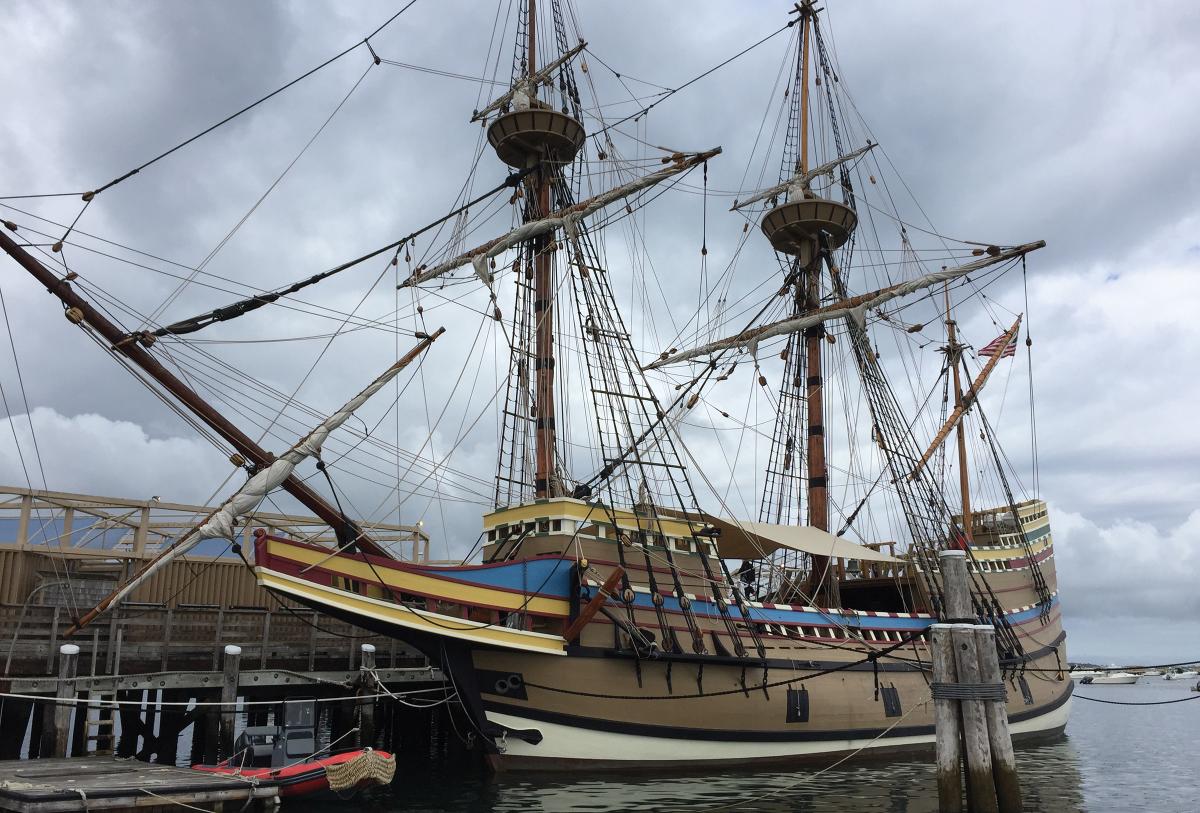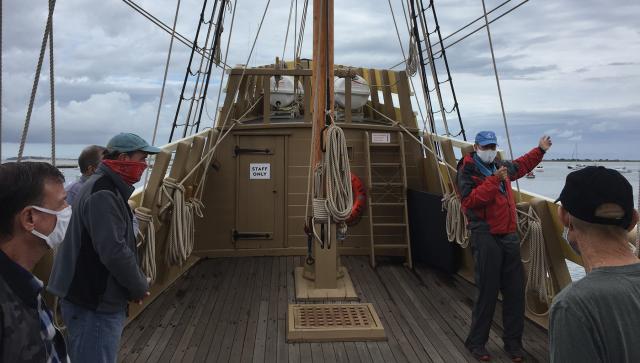The Mayflower, a small cargo ship, carried the first English settlers to New England in 1620. Her Pilgrim passengers brought with them concepts of religious freedom and self-government (the Mayflower Compact) that have helped shape American thinking through the country’s 400 years of history.
The colonists intended to go to the Hudson River area, but weather forced the ship to Cape Cod. In mid-December, they settled on the site that would become Plymouth Colony. More than half the colonists and crew died of disease before the ship went back to England in the spring of 1621.
A new Mayflower returned to America in 1957. Built in England, the Mayflower II commemorates Anglo-American cooperation in World War II. For more than 60 years, the Mayflower II has welcomed visitors in Plymouth. In 2016, the venerable ship began a major overhaul at Mystic Seaport Museum in Mystic, Connecticut. She is now back in Plymouth and offers much to see and appreciate
From the State Pier on Water Street, visitors can observe the ship’s painted sloping sides and the high castle-like structures fore and aft that make plain the origin of the term foc’sle (forecastle). Tours begin on the main deck, where the small size of the narrow, 106-foot vessel astounds visitors.
From the main deck, guests go directly down a ladder to the ʼtween deck. The ʼtween deck has no exhibits or reproduction artifacts and therefore may look spacious. However, as visitors take in the low, dark compartment, an interpreter explains that the Mayflower’s 102 passengers lived here, crammed together in miserable conditions, during their ten-week crossing of the North Atlantic and for months afterward, until shelters ashore could be built.
Sharing this cramped space with the colonists were sheep, goats, and chickens—the breeding stock for the new colony. There were no cabins, and men and women had little privacy. People slept on straw pallets and used buckets for toilets and seasickness. Three women were pregnant and one baby was born during the passage.
The ʼtween deck reveals the ship’s construction. The mainmast runs through it, and the capstan and windlass, essential for many kinds of heavy work, are located here. Stout oak ribs are visible, and timbers in the overhead show the adze marks of hand construction.
All the way aft on the ʼtween deck is the whipstaff, a stout wooden pole that sailors used to steer the ship. Like all the ships of her era, the Mayflower did not have a ship’s wheel. She is one of the few re-created historic ships that exhibit this ancient steering method.
Returning to the main deck, visitors can look into the foc’sle cabin. Aft on the main deck is the enclosed steerage compartment where the helmsman stood. It also provided berthing for some of the officers. Farther aft is the great cabin, used by the captain. Neither of these compartments is furnished with bunks or personal items, so visitors must use their imagination to picture a sailor’s life in these small spaces.
Guests next ascend a ladder to the half deck, where the ship’s bell is located. Looking aloft, they can admire the complicated tracery of the Mayflower II’s running and standing rigging. The half deck also provides fine views of Plymouth Harbor. From here visitors return to the pier.
The Mayflower II is not accessible to wheelchairs, and people with mobility limitations may face difficulty on the ship’s ladders. Bathrooms are located in a well-signed building close to the ship.
Face coverings/masks are required for all staff and guests.




